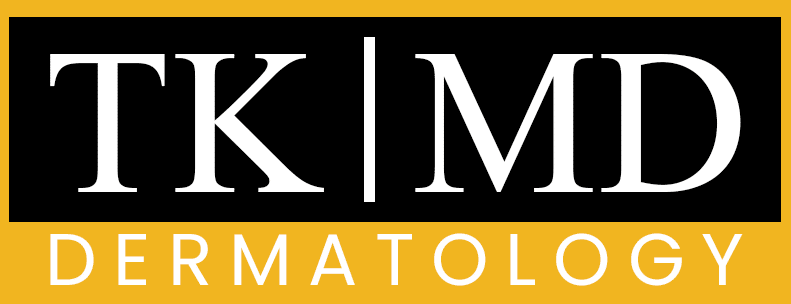In the microscopic world that surrounds us, there exists a tiny creature known as the Demodex mite. These minuscule arachnids, often referred to as “face mites,” inhabit the skin of mammals, including humans. While they are a natural part of our skin’s ecosystem, their presence often goes unnoticed.
However, as we delve deeper into the realm of Demodex mites, we uncover their fascinating biology, life cycle, and the potential issues they can cause when their populations become unbalanced. Understanding these mites is crucial for both our health and the health of our skin. Demodex mites have been a subject of interest for researchers and dermatologists alike.
They are not just mere inhabitants of our skin; they play a role in our skin’s health and can influence various skin conditions. As we explore the characteristics, life cycle, and implications of Demodex mites, we will gain insight into how these tiny organisms can impact our well-being. This article aims to provide a comprehensive overview of Demodex mites, shedding light on their significance in dermatology and beyond.
Key Takeaways
- Demodex mites are microscopic parasites that live on the skin and in hair follicles of humans and animals.
- Demodex mites are elongated, cigar-shaped organisms with eight legs and are typically found in the hair follicles and sebaceous glands of the skin.
- The life cycle of a Demodex mite consists of five stages: egg, larva, protonymph, tritonymph, and adult.
- Demodex mite infestation can lead to skin conditions such as rosacea, acne, and blepharitis.
- Symptoms of Demodex mite infestation can include itching, redness, and inflammation of the skin and eyes.
Demodex Mite Characteristics
Species and Habitats
There are two primary species of Demodex mites: Demodex folliculorum and Demodex brevis, each with distinct habitats. One of the most fascinating aspects of Demodex mites is their diet, which consists mainly of dead skin cells, sebum, and other organic debris found on our skin.
Diet and Skin Balance
The feeding behavior of Demodex mites plays a crucial role in maintaining the balance of our skin’s microbiome. However, when their population grows excessively, it can lead to various skin issues.
Thrive and Concerns
Their ability to thrive in the warm, oily environment of hair follicles makes them well-adapted to their niche, but it also raises concerns about overpopulation and its consequences.
Demodex Mite Life Cycle

The life cycle of Demodex mites is a fascinating process that consists of several stages: egg, larva, nymph, and adult. The entire cycle typically spans about two to three weeks under optimal conditions. Female mites lay eggs within the hair follicles, where they remain protected from external threats.
Once the eggs hatch, the larvae emerge and begin to feed on the organic material present in their environment. As larvae mature into nymphs, they undergo several molts before reaching adulthood. Adult Demodex mites are capable of reproducing quickly, which can lead to population explosions if conditions are favorable.
This rapid reproduction is one reason why we may experience symptoms associated with Demodex infestations when their numbers increase significantly. Understanding this life cycle is essential for developing effective treatment strategies and managing infestations.
Demodex Mite Infestation
Demodex mite infestations can occur when there is an overgrowth of these organisms on the skin. Factors such as hormonal changes, immune system suppression, and poor hygiene can contribute to this imbalance. When we experience an infestation, it can lead to various skin issues, including redness, irritation, and inflammation.
In some cases, individuals may not even realize they have an infestation until symptoms become pronounced. The prevalence of Demodex mites is surprisingly high; studies suggest that nearly 100% of adults harbor these mites on their skin. However, not everyone experiences adverse effects from their presence.
It is only when the population becomes excessive that we may notice symptoms or develop skin conditions associated with these mites. Recognizing the signs of an infestation is crucial for timely intervention and treatment.
Demodex Mite Symptoms
The symptoms associated with Demodex mite infestations can vary widely among individuals. Some may experience mild irritation or redness, while others may develop more severe conditions such as rosacea or blepharitis. Common symptoms include itching, burning sensations, and the appearance of small red bumps on the skin.
In cases where the eyes are affected, individuals may experience crusting along the eyelids or excessive tearing. It is important to note that not everyone with Demodex mites will exhibit symptoms. Many people coexist with these mites without any noticeable issues.
However, for those who do experience symptoms, it can be distressing and impact their quality of life. Understanding these symptoms allows us to seek appropriate medical advice and treatment options.
Demodex Mite Diagnosis

Diagnosing a Demodex mite infestation typically involves a thorough examination by a dermatologist or healthcare professional. They may perform a skin scraping or use a specialized microscope to identify the presence of these mites in hair follicles or sebaceous glands. In some cases, a biopsy may be necessary to rule out other skin conditions that may present similar symptoms.
While diagnosing Demodex infestations can be straightforward for experienced professionals, it is essential for us to communicate our symptoms clearly during consultations. Providing detailed information about our skin condition can aid in accurate diagnosis and ensure that appropriate treatment options are explored.
Demodex Mite Treatment
Treating a Demodex mite infestation often involves a multi-faceted approach tailored to individual needs. Topical treatments containing ingredients such as benzoyl peroxide or sulfur may be prescribed to reduce mite populations and alleviate symptoms. In more severe cases, oral medications may be necessary to address persistent infestations.
In addition to medical treatments, we can also adopt lifestyle changes to support our skin health. Maintaining proper hygiene, using non-comedogenic skincare products, and avoiding excessive oiliness can help create an environment less conducive to mite overgrowth. It is crucial for us to follow our healthcare provider’s recommendations closely to achieve optimal results.
Demodex Mite Prevention
Preventing Demodex mite infestations involves adopting good skincare practices and maintaining overall skin health. Regular cleansing routines can help remove excess oil and dead skin cells that provide nourishment for these mites. We should also be mindful of sharing personal items such as towels or makeup brushes, as this can facilitate the transfer of mites between individuals.
Additionally, managing stress levels and ensuring a balanced diet can contribute to a healthier immune system, which plays a vital role in keeping mite populations in check. By taking proactive measures, we can reduce the likelihood of experiencing an infestation and promote healthier skin overall.
Demodex Mites and Skin Conditions
Demodex mites have been linked to various skin conditions beyond mere infestations. For instance, they are often associated with rosacea, a chronic inflammatory condition characterized by facial redness and visible blood vessels. Research suggests that an overabundance of Demodex mites may exacerbate rosacea symptoms by triggering inflammatory responses in susceptible individuals.
Moreover, conditions like acne may also be influenced by these mites due to their role in clogging pores and contributing to inflammation. Understanding the connection between Demodex mites and these skin conditions allows us to approach treatment holistically, addressing both the underlying causes and the symptoms associated with these disorders.
Demodex Mites and Eye Conditions
Demodex mites are not limited to affecting just the skin; they can also impact eye health.
Blepharitis, an inflammation of the eyelids, has been linked to an overgrowth of Demodex mites along the lash line.
Symptoms may include redness, itching, crusting along the eyelids, and even loss of eyelashes in severe cases.
For those experiencing eye-related issues due to Demodex mites, it is essential to seek specialized care from an eye care professional or dermatologist who understands the connection between these mites and ocular health.
Treatment may involve targeted therapies aimed at reducing mite populations around the eyes while alleviating associated symptoms.
Conclusion and Future Research
In conclusion, our exploration of Demodex mites reveals their complex relationship with human health and skin conditions. While these tiny creatures are a natural part of our skin’s ecosystem, an imbalance in their population can lead to various issues that affect our well-being. As we continue to learn more about these mites through ongoing research, we gain valuable insights into their role in dermatology and potential treatment strategies.
Future research will undoubtedly shed light on new treatment modalities and preventive measures for managing Demodex mite infestations effectively. By fostering awareness about these microscopic inhabitants and their implications for our health, we empower ourselves to take proactive steps toward maintaining healthy skin and overall well-being. As we move forward in this journey of discovery, we remain committed to understanding the intricate balance between our bodies and the myriad organisms that coexist with us.
If you are interested in learning more about hair loss and potential solutions, you may want to check out this article on how dermatologists can help with hair loss. Understanding the role of dermatologists in treating various skin and hair conditions can provide valuable insights into managing issues like Demodex mites. Additionally, you can explore Dr. Trisha Khanna’s patient portal for more information on skincare and dermatology services.
FAQs
What are Demodex mites?
Demodex mites are microscopic parasites that live in the hair follicles and sebaceous glands of mammals, including humans.
Where are Demodex mites found?
Demodex mites are commonly found on the skin of humans, particularly in areas with high concentrations of sebaceous glands, such as the face, scalp, and chest.
What do Demodex mites feed on?
Demodex mites feed on the oils and dead skin cells in the hair follicles and sebaceous glands of their host.
Are Demodex mites harmful to humans?
In most cases, Demodex mites are harmless and do not cause any symptoms. However, in some cases, they can contribute to skin conditions such as rosacea and blepharitis.
How can Demodex mite infestations be treated?
Demodex mite infestations can be treated with topical medications, such as creams or shampoos, that are designed to kill the mites. In severe cases, oral medications may be prescribed by a healthcare professional.
Can Demodex mites be prevented?
While it is not possible to completely prevent Demodex mite infestations, good hygiene practices, such as regular face washing and cleaning of bedding and towels, can help reduce the risk of infestation.


